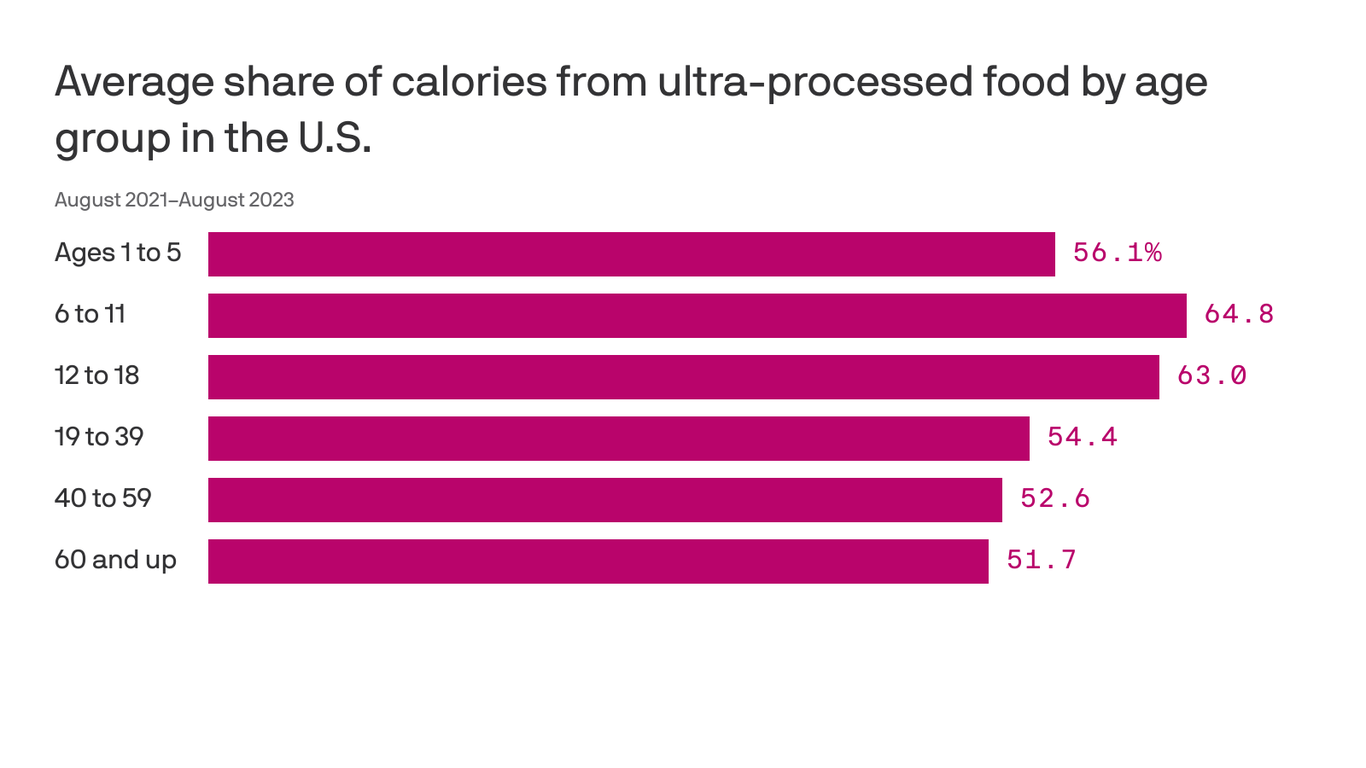
"Adults with incomes of 350% of the federal poverty level or higher consumed about half of their calories from ultra-processed foods - about 5% fewer than their lower-income peers."
"Sandwiches including burgers were the top contributor of ultra-processed calories for kids and adults, making up 7.6% and 8.6% of intake in the category, respectively."
"The share of calories from ultra-processed foods didn't vary significantly by income level, but ultra-processed foods tend to be cheaper than fresh or minimally produced items."
"Ultra-processed food consumption actually declined from 2017 to 2023 for all age groups, yet still made up 62% of kids' calories and 53% of adults'."
Ultra-processed food consumption decreased from 2017 to 2023 across all age groups. However, ultra-processed foods accounted for 62% of calories consumed by children and 53% by adults during this period. Youths aged 6 to 11 exhibited the highest intake at almost 65%, while adults over 60 had the lowest. Income level did not significantly affect the proportion of ultra-processed food calories consumed, yet higher-income adults consumed slightly fewer ultra-processed calories. Sandwiches, sweet bakery products, and beverages were major contributors to caloric intake from ultra-processed foods.
Read at Axios
Unable to calculate read time
Collection
[
|
...
]